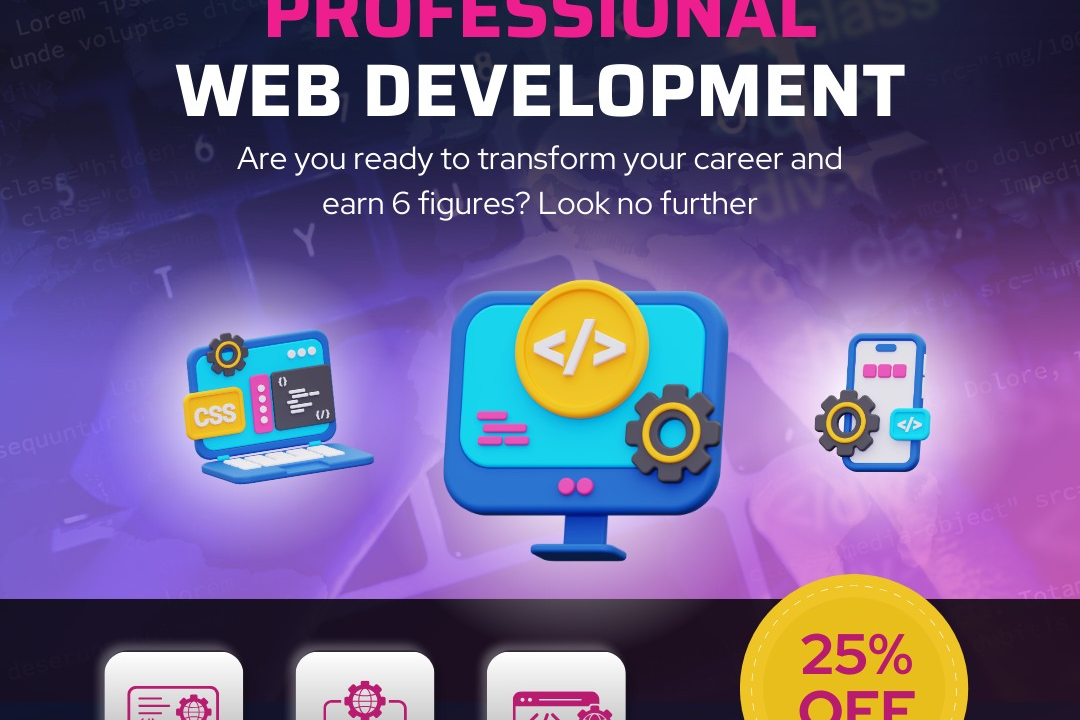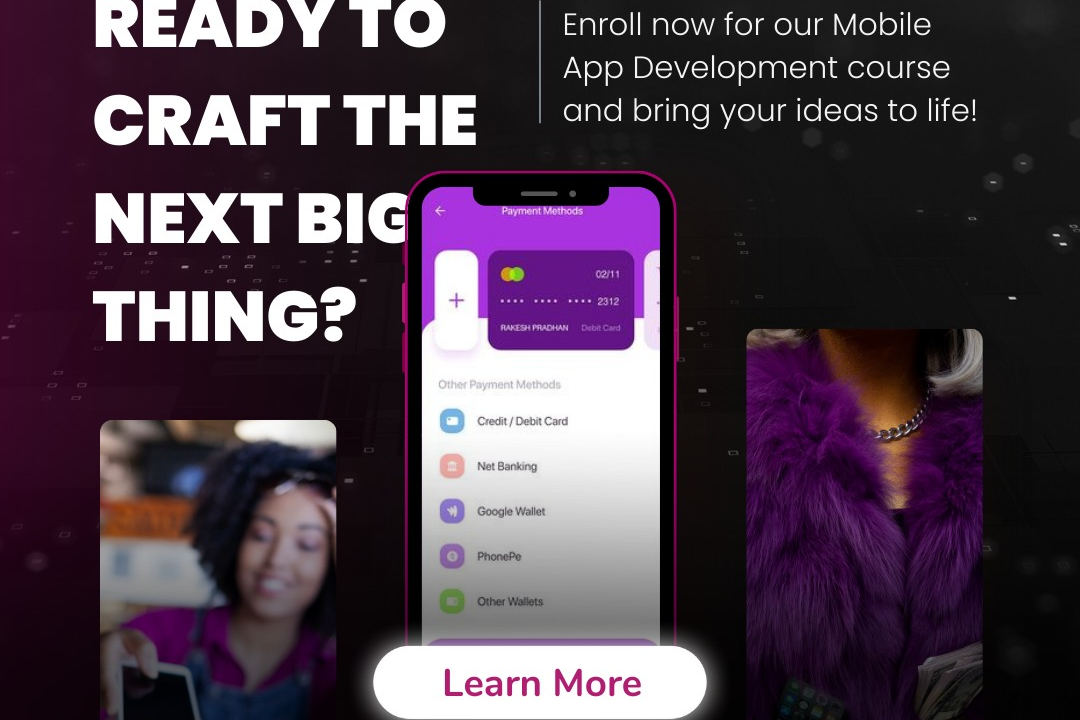Even Odd Php Program User Input
A PHP program to check whether a number is even or odd based on user input is a simpleScript that pr
Even Odd Php Program User Input
The PHP program to determine whether a number is even or odd based on user input is a practical example for beginners to understand core programming concepts such as user interaction, conditional statements, and arithmetic operations. It demonstrates how to accept dynamic input and process it to produce meaningful results, which is essential for developing more complex applications. Learning to create such programs helps build a foundational understanding of logic flow and decision-making in PHP, making it a useful stepping stone for those starting their programming journey or working on projects requiring user-driven calculations.
To Download Our Brochure: https://www.justacademy.co/download-brochure-for-free
Message us for more information: +91 9987184296
The PHP program to determine whether a number is even or odd based on user input is a practical example for beginners to understand core programming concepts such as user interaction, conditional statements, and arithmetic operations. It demonstrates how to accept dynamic input and process it to produce meaningful results, which is essential for developing more complex applications. Learning to create such programs helps build a foundational understanding of logic flow and decision making in PHP, making it a useful stepping stone for those starting their programming journey or working on projects requiring user driven calculations.
Course Overview
The ‘Even Odd PHP Program User Input’ course teaches how to create a PHP script that determines whether a user-entered number is even or odd. it covers capturing user input, applying conditional logic, and displaying results, providing a solid foundation for beginner PHP programmers to understand input handling and decision-making in web development.
Course Description
Learn to create a PHP program that takes user input and determines whether the number is even or odd. This course covers capturing input, applying conditional statements, and displaying results, providing a practical introduction to PHP programming and decision-making logic.
Key Features
1 - Comprehensive Tool Coverage: Provides hands-on training with a range of industry-standard testing tools, including Selenium, JIRA, LoadRunner, and TestRail.
2) Practical Exercises: Features real-world exercises and case studies to apply tools in various testing scenarios.
3) Interactive Learning: Includes interactive sessions with industry experts for personalized feedback and guidance.
4) Detailed Tutorials: Offers extensive tutorials and documentation on tool functionalities and best practices.
5) Advanced Techniques: Covers both fundamental and advanced techniques for using testing tools effectively.
6) Data Visualization: Integrates tools for visualizing test metrics and results, enhancing data interpretation and decision-making.
7) Tool Integration: Teaches how to integrate testing tools into the software development lifecycle for streamlined workflows.
8) Project-Based Learning: Focuses on project-based learning to build practical skills and create a portfolio of completed tasks.
9) Career Support: Provides resources and support for applying learned skills to real-world job scenarios, including resume building and interview preparation.
10) Up-to-Date Content: Ensures that course materials reflect the latest industry standards and tool updates.
Benefits of taking our course
Functional Tools
1 - PHP Development Environment: Students learn to set up a reliable PHP development environment using tools like XAMPP, MAMP, or WAMP server packages. These tools provide an easy to install Apache server, PHP interpreter, and MySQL database, enabling learners to run PHP scripts locally on their computers. By mastering environment setup, students can streamline their workflow, troubleshoot common server issues, and ensure their code runs smoothly across different setups. Proper environment configuration is fundamental for developing, testing, and deploying PHP applications efficiently. The course guides learners through the installation process, highlighting best practices to avoid common pitfalls and optimize their development experience.
2) Text Editors and IDEs: The course covers popular code editors such as Sublime Text, Visual Studio Code, and IDEs like PHPStorm, which offer syntax highlighting, code completion, debugging features, and version control integration. Teaching students how to navigate and utilize these tools improves productivity and code quality. These editors also include extensions and plugins tailored for PHP development, making it easier to write, test, and debug code effectively. Practical exercises demonstrate how to organize code files, utilize snippets, and leverage debugging tools within these environments, enhancing learners’ coding efficiency.
3) Version Control Systems: Students are introduced to Git, a vital tool for collaborative development and version management. They learn to initialize repositories, commit changes, create branches, and collaborate through platforms like GitHub or GitLab. Version control helps learners track modifications, revert to previous versions, and manage codebase changes systematically during their PHP projects. Training includes practical demonstrations on resolving merge conflicts, maintaining documentation through commit messages, and leveraging collaboration features. This skill is essential for professional development, allowing students to work seamlessly in team environments and safeguard their code.
4) Testing and Debugging Tools: This segment emphasizes integrating debugging tools like Xdebug with PHP development environments to identify and fix errors swiftly. Students learn to use breakpoints, step through code execution, and monitor variable values to troubleshoot logical issues efficiently. Incorporating testing frameworks such as PHPUnit educates learners on writing automated tests to verify code functionality, ensuring that their scripts handle different inputs correctly. These tools help instill best practices for maintaining code quality, reducing bugs, and delivering reliable web applications.
5) Web Browsers and Developer Tools: Students utilize modern web browsers like Chrome, Firefox, or Edge that come with built in developer tools. These tools allow inspection of page elements, network monitoring, and JavaScript debugging, which complements PHP development. Understanding how to analyze server responses, track requests, and view console errors enhances troubleshooting skills. The course demonstrates how browser developer tools integrate with PHP projects to optimize front end and back end interactions, giving students a holistic approach to web development.
6) Command Line Interface (CLI): The course emphasizes using command line tools for running PHP scripts, managing files, and executing version control commands. Proficiency in CLI improves efficiency, especially for tasks like package management, automating workflows, and deploying applications. Students learn basic terminal commands, script execution, and environment configuration through command prompts or terminals. The instructor demonstrates how to navigate directories, execute PHP code directly from the terminal, and manage project files, fostering a deeper understanding of the development process.
7) Database Management Tools: The course introduces popular database management interfaces such as phpMyAdmin, MySQL Workbench, and Adminer. These tools enable students to design, modify, and manage MySQL databases visually, simplifying tasks like creating tables, running queries, and exporting data. Understanding database management is essential for developing dynamic PHP applications that rely on data storage and retrieval. The training emphasizes best practices for database schema design, query optimization, and securing sensitive information, empowering learners to build robust back end systems.
8) Localhost Servers for Testing: Students explore setting up and using local server environments like XAMPP, WAMP, or MAMP to simulate live hosting conditions on their machines. These environments enable testing of PHP scripts in an environment similar to production servers, allowing for comprehensive debugging, performance testing, and troubleshooting without affecting live websites. The course provides step by step guidance on installation, configuration, and deployment workflows, ensuring learners can confidently test and showcase their projects before publishing them publicly.
9) FTP Clients for Deployment: The training covers the use of FTP (File Transfer Protocol) clients such as FileZilla, WinSCP, or Cyberduck for uploading and managing website files on remote servers. Students learn secure connection setup, file transfer procedures, and synchronization techniques to deploy PHP applications smoothly. Mastering FTP tools helps learners manage website content efficiently, update codebases, and maintain live projects with minimal downtime, which is vital for real world web development workflows.
10) Package Managers and Dependency Management: The course introduces Composer, PHP's prominent dependency management tool. Students learn to include libraries, frameworks, and third party packages into their projects efficiently. Proper use of Composer ensures that code dependencies are consistent across development environments and simplifies the process of updating and maintaining libraries. The training demonstrates creating composer.json files, resolving dependencies, and autoloading classes, strengthening learners’ ability to develop scalable, maintainable PHP applications.
11 - Continuous Integration / Continuous Deployment (CI/CD): The course covers fundamental concepts of automating build, testing, and deployment processes using tools like Jenkins, GitHub Actions, or GitLab CI. Learners understand how to set up automated pipelines that run tests, check code quality, and deploy applications to staging or production servers automatically. Incorporating CI/CD practices enhances code reliability, accelerates release cycles, and promotes collaboration in team projects, equipping students with industry ready skills.
12) Cloud Hosting Platforms: The training explores deploying PHP PHP applications on cloud services such as AWS, Google Cloud, or Microsoft Azure. Students learn about configuring web servers, databases, and storage solutions in cloud environments. Understanding cloud deployment expands the possibilities for scaling applications, ensuring high availability, and integrating with other cloud services like analytics and messaging. The course provides practical guidance on deploying projects, managing cloud resources, and optimizing performance.
13) Web Security Tools and Practices: The course emphasizes security testing tools such as OWASP ZAP, Burp Suite, or Nessus to identify vulnerabilities within web applications. Students are educated about common security threats like SQL injection, cross site scripting (XSS), and session hijacking. The training teaches implementing security measures such as input validation, prepared statements, and HTTPS configuration, ensuring the development of secure PHP applications that protect user data and comply with industry standards.
14) API Testing and Postman: The course introduces API testing methodologies using Postman, allowing learners to test RESTful services seamlessly. Students learn to craft requests, examine responses, and automate API validation processes. Developing API testing skills equips students to handle server responses, debug issues, and ensure interoperability between frontend and backend systems. Integrating API testing into their workflow makes PHP applications more robust and scalable.
15) Containerization with Docker: The training includes setting up containerized PHP development environments with Docker. Students learn to create Docker images, manage containers, and deploy applications consistently across different environments. Dockerization simplifies dependency management, ensures environment parity, and accelerates deployment workflows. Mastering container technology prepares learners for modern DevOps practices, enabling scalable and portable web application deployments.
16) Monitoring and Performance Tools: Students explore performance monitoring solutions such as New Relic, Datadog, or Nagios, which provide insights into application health, server load, and response times. The course explains how to interpret metrics, set up alerts, and optimize PHP code for improved performance. Regular monitoring helps in identifying bottlenecks, ensuring high availability, and maintaining optimal application performance in production environments.
Browse our course links : https://www.justacademy.co/all-courses
To Join our FREE DEMO Session:
This information is sourced from JustAcademy
Contact Info:
Roshan Chaturvedi
Message us on Whatsapp: +91 9987184296
Email id: info@justacademy.co












